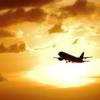
Sign in to follow this
Followers
0

Can someone tell me what a -3.00 ft /min landing looks like?
By
Jerad, in MS FSX | FSX-SE Forum


By
Jerad, in MS FSX | FSX-SE Forum